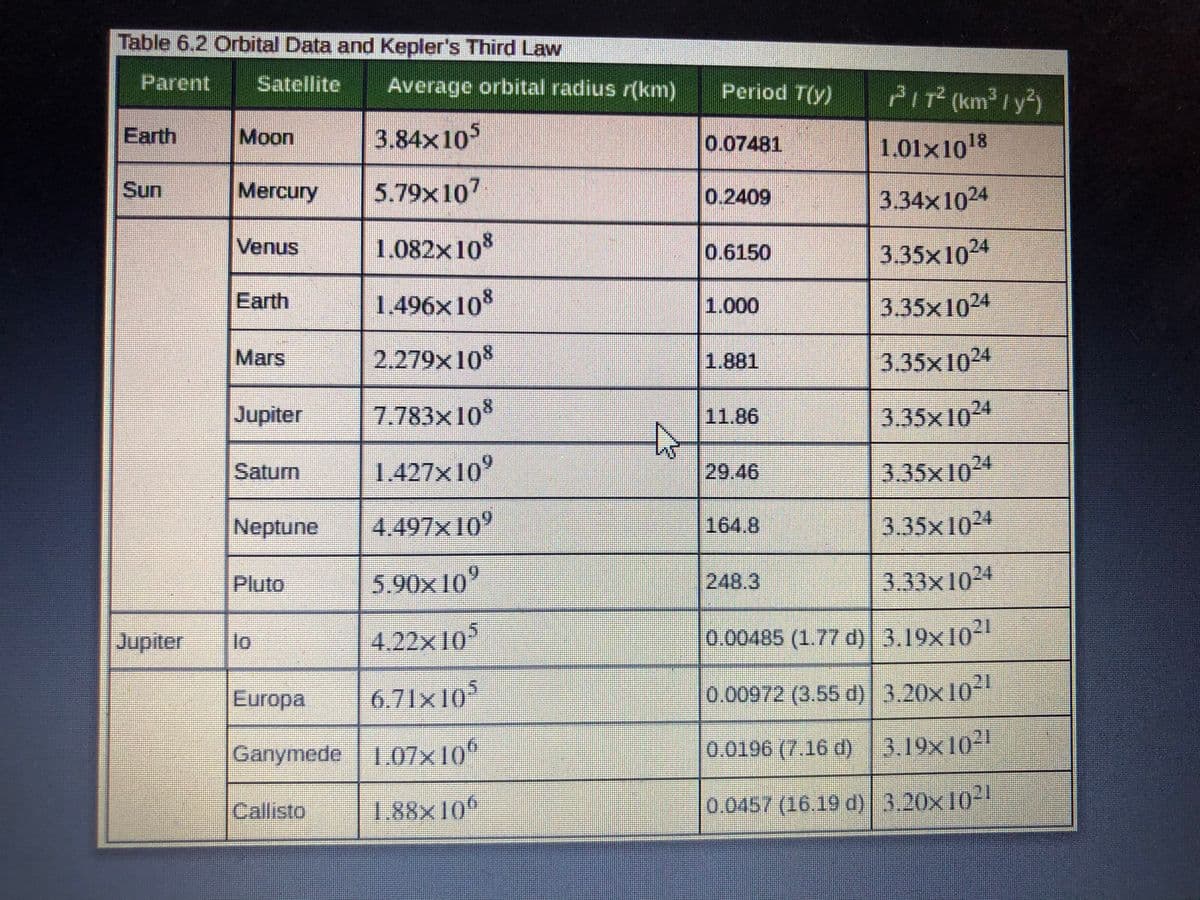A geosynchronous Earth satellite is one that has an orbital period of precisely 1 day. Such orbits are useful for communication and weather observation because the satellite remains above the same point on Earth (provided it orbits in the equatori
A geosynchronous Earth satellite is one that has an orbital period of precisely 1 day. Such orbits are useful for communication and weather observation because the satellite remains above the same point on Earth (provided it orbits in the equatori
Horizons: Exploring the Universe (MindTap Course List)
14th Edition
ISBN:9781305960961
Author:Michael A. Seeds, Dana Backman
Publisher:Michael A. Seeds, Dana Backman
Chapter1: Here And Now
Section: Chapter Questions
Problem 4P: Venus orbits 0.72 AU from the Sun. What is that distance in kilometers? (Hint: See Problem 3.)
Related questions
Question
A geosynchronous Earth satellite is one that has an orbital period of precisely 1 day. Such orbits are useful for communication and weather observation because the satellite remains above the same point on Earth (provided it orbits in the equatorial plane in the same direction as Earth's rotation). Calculate the radius (in km) of such an orbit based on the data for the moon in this table.

Transcribed Image Text:Table 6.2 Orbital Data and Kepler's Third Law
Parent
Satellite
Average orbital radius r(km)
Period T(y)
PIT(km³ /y)
Earth
Мoon
3.84x10°
0.07481
1.01x1018
Sun
Mercury
5.79x107
0.2409
3.34x1024
Venus
1.082x10
3.35x1024
0.6150
Earth
1.496x10
1.000
3.35x1024
Mars
2.279x10*
1.881
3.35x1024
Jupiter
7.783x10*
11.86
to
29.46
3.35x10*
Saturn
1.427x10"
3.35x10*
Neptune
4.497x10°
|164.8
3.35x1024
5.90x 10"
|248.3
3.33x1024
Pluto
Jupiter
lo
4.22x10
0.00485 (1.77 d) 3.19x 10-"
Europa
6.71x10"
0.00972 (3.55 d) 3.20x10-"
Ganymede 1.07x10
0.0196 (7.16 d) 3.19x10"
Callisto
1.88×10
0.0457 (16.19 d)| 3,20x10
Expert Solution
This question has been solved!
Explore an expertly crafted, step-by-step solution for a thorough understanding of key concepts.
This is a popular solution!
Trending now
This is a popular solution!
Step by step
Solved in 2 steps

Knowledge Booster
Learn more about
Need a deep-dive on the concept behind this application? Look no further. Learn more about this topic, physics and related others by exploring similar questions and additional content below.Recommended textbooks for you

Horizons: Exploring the Universe (MindTap Course …
Physics
ISBN:
9781305960961
Author:
Michael A. Seeds, Dana Backman
Publisher:
Cengage Learning

Physics for Scientists and Engineers: Foundations…
Physics
ISBN:
9781133939146
Author:
Katz, Debora M.
Publisher:
Cengage Learning

Stars and Galaxies (MindTap Course List)
Physics
ISBN:
9781337399944
Author:
Michael A. Seeds
Publisher:
Cengage Learning

Horizons: Exploring the Universe (MindTap Course …
Physics
ISBN:
9781305960961
Author:
Michael A. Seeds, Dana Backman
Publisher:
Cengage Learning

Physics for Scientists and Engineers: Foundations…
Physics
ISBN:
9781133939146
Author:
Katz, Debora M.
Publisher:
Cengage Learning

Stars and Galaxies (MindTap Course List)
Physics
ISBN:
9781337399944
Author:
Michael A. Seeds
Publisher:
Cengage Learning

Foundations of Astronomy (MindTap Course List)
Physics
ISBN:
9781337399920
Author:
Michael A. Seeds, Dana Backman
Publisher:
Cengage Learning


University Physics Volume 1
Physics
ISBN:
9781938168277
Author:
William Moebs, Samuel J. Ling, Jeff Sanny
Publisher:
OpenStax - Rice University